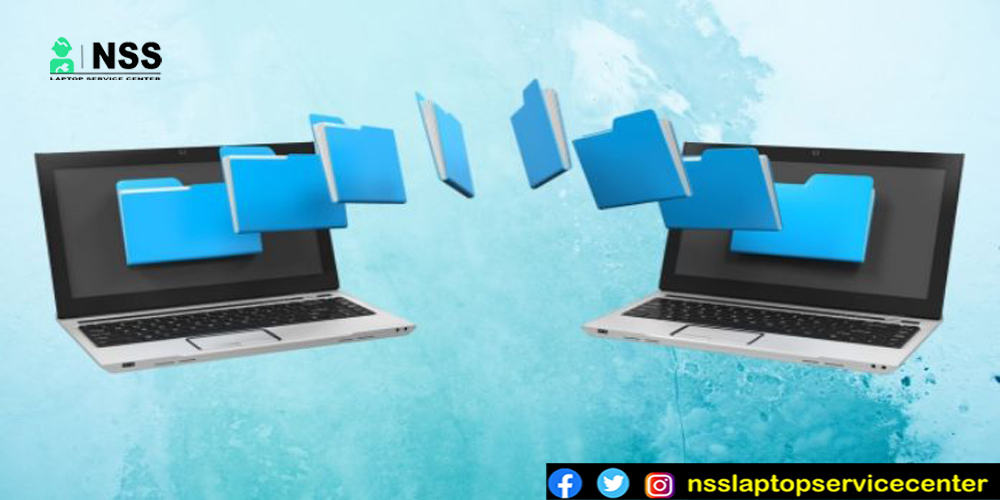
How to Transfer Files from PC to PC
Getting a brand-new PC is the most exciting thing ever. Typically, purchasing a new computer entails acquiring many new features, increased power, better graphics, and storage. If you have to move files from your old computer to your new one, some of your joy might be dampened. Are you curious about file transfers from PC to PC? We'll assist you in choosing the most effective approach.
The number of files you need to transfer, the size of the files, and the operating systems of the two computers are some variables that will affect the procedure.
Although transferring files isn't a complicated operatiisn'the amount of data you need to transfer could make it take several hours
1. Cloud storage or web data transfers
Many cloud storage companies, including Google Drive and OneDrive, let you send and download files. Your tastes will determine the storage firm you select. Why are cloud drives so beneficial for file transfers? These cloud-based services allow you to download and exchange material of essentially unlimited size, storage space permitting.
If you don't have cloud storage or would instead not utilize it, don't use alternative online applications to upload large files. One free option is PlusTransfer, which lets you simultaneously transfer files up to 5GB. Do you dislike signing up for services? You don't need to download any software or set up an account, so don't worry.
If you prefer a downloading software solution, BitTodon't Sync is another straightforward approach to exchanging large files without relying on online services. Use the peer-to-peer file-sharing program FilePizza as well. Since the second computer might download the file as soon as the first one uploads it, you won't have to wait. FilePizza is browser-based, so you don't need both PCs connected to the same cloud storage to use it.
2. SSD and HDD drivesdon'tSATA cables
Are you attempting to move data from an outdated laptop to a new one? Fortunately, you are mistaken in thinking you have no options for recovering your data if your old computer stops working. SATA cables connect hard disc drives and solid-state drives to the motherboard, which is the primary circuit board of the computer.
Your new computer's SATA SSD or SATA (an external SATA) port can accept your old hard drive for connection. The operating computer of your new PC will read the industry after you install the old one and start transferring the data.
Finding an extra SATA port may be a problem with this strategy. You may use a SATA to USB converter to resolve this issue.
You can use your old hard disc as an external storage device once you've removed all the files from it. Use this tool to back up any crucial files you may have.
3. Basic cable transfer
Using a cloud-based service or an external hard drive, you can transmit data through various cables. This method is often faster than discs because files are copied and pasted simultaneously from PC to PC.
The transfer program with the cable will walk you through the migration of your data and settings as soon as you connect your devices through USB ports. You may transfer data much more quickly if both PCs have USB 3.0 ports, so keep that in mind as you start the file migration process.
HP offers a range of cables to enhance the experience if you require lines or equipment to begin your data transmission.
Also Read: How To Boot A Microsoft Surface Laptop From USB
Also Read: Difference Between DDR 3 and DDR 4 Laptop Ram
4. Use software to speed up your data transfer
The LapLink PCmover v.11.0 Ultimate with Ethernet cable might be the answer you've been seeking if you need a quick way to move files between PCs. This software simplifies transferring files from your old PC to your new Windows 10 computer.
Installing the PCmove installed on your new and old PCs is necessary to use it. Most programs and files will be installed to be used right away on the new PC without the need for license keys or installation CDs. PCmover is the blazing-fast, essential solution that prevents data transfer irritation because Microsoft's Windows Easy Transfer was discontinued.
PCmover benefits:
-
It enables you to select precisely which documents, preferences, programs, and users to transfer to your new PC
-
If many users share the device, only transfer particular files and Microsoft's those users.
-
Each user has unique access controls and security details for each file.
-
The sole data transfer method Microsoft advises
-
You can relocate your PC's data in several ways using Laplink's PCmover. The quickest and most effective migration method will be selected for you by PC mover's auto connection technology:
-
Using a wired or wireless network
-
via means of a Laplink Ethernet cable
-
using a LaplinPC'sB 2.0 cable
-
Laplink USB 3.0 SupeLaplink'sble
-
Direct migration from an outdated hard disc or an external storage device
-
The pace of PCmover'sigration will vary based on factors including the quantity and size of files, the connection speed and dependability, and the size of the hard drive, just like with any other transfer method (s).
Using software like PCmover gives you the ability to personalize your new PC depending on the settings of the old one, which is its main advantage. Your new PC will appear and feel identical once you apply the settings from your previous one.

5. Transfer data using LAN or WiFi.
You can set up a local area network (LAN) so that you can use one PC to browse the hard drives of the other PC and select the files you want to be transferred over if both of your computers are connected to the same network and are within range of one another.
A built-in feature of Windows 10 and other operating systems enables users to set up a home network so that devices connected to the same network may recognize one another. For the user, what does that mean? You won't have to set up a new connection when you move files from PC to PC, so that's good. The link will always be available once both devices are turned on.

6. Using an external storage device or flash drives
In contrast to email, which has rather strict file sizwon'titations of up to about 25MB, this is likely the most used method for transferring files from one PC to another. You only need to finish the following steps to use this data-sharing method:
-
Connect a USB flash drive to an outdated PC.
-
Once the flash drive is detected, transfer the appropriate files and programs to it.
-
Utilize the correct techniques to unplug the flash drive (do not remove until files have finished copying)
-
Transfer data by connecting the flash drive to your new computer.
-
Although this copy-and-paste technique is simple to use, it is constrained by the external device's storage capacity.
-
Because of its rapid data transfer rate, you might wish to invest in a USB 3.0 flash drive if the two computers you're transferring data between have USB 3.0 connections.
The transfer rate speed will be more crucial as you have more data to move to the device. Minor speed discrepancies can add up to several hours. If you want to move many files, your users might consider upgrading to an external hard drive to migrate files, as flash drives often have less storage capacity.
After you're done transferring files
Before discarding the old drive, clean it.
Are all those file transfers finally complete? If you intend to sell, give away, or throw away your old PC, your first action should be to wipe the drive and computer. Your previous emails and other sensitive information may still get you in the wrong hands even after you transfer your files, so you are still not completely protected.
your new drive with a backup
The following action is to safeguard the files you moved to your new device against potential danger. After the file migration, you need to back up all significant files.
If you've ever missed a deadline on a crucial business project or experienced the "blue screen of death" when attempting to submit one, you know how frustrating it can be.
The following examples are more typical than you would realize:
-
Many years of research are lost when a tablet is taken.
-
A natural disaster wipes out a PC containing the priceless you've pictured.
-
Loss of a laptop or phone while traveling
-
Your files become entirely inaccessible due to viruses or ransomware.
-
That data is permanently lost without a backup of those files. Take the time to back up your files on a device other than your primary computer. It would be best to consider storing a hard copy of legal documents in a safe. Most people only begin backing up their data after experiencing a significant data loss. Still, you can stay ahead of disaster by keeping multiple copies of your data and files on an additional external hard drive.
Transferring data doesn't have to be a headache.
Although learning how to move data from one PC to another initially looks difficult, there are numerous approaches you can take to accomplish your goal. You can select software that walks you through the data transfer procedure step-by-step, like PCmover. Additionally, you can employ the copy-and-paste app on an external hard drive.
Also Read: HP Laptop Hard Disk & SSD Price in Raheja Vihar Powai Mumbai India
Also Read: Which Ram Density Is Large
Conclusion:
I won't say much, as the blog has informed you that transferring data from one laptop to another is easy, and you can use it for various purposes.
Frequently Asked Questions
Popular Services
- MacBook Battery Replacement Cost
- HP Printer Repair in Delhi NCR
- Dell Laptop Repair
- HP Laptop Repair
- Samsung Laptop Repair
- Lenovo Laptop Repair
- MacBook Repair
- Acer Laptop Repair
- Sony Vaio Laptop Repair
- Microsoft Surface Repair
- Asus Laptop Repair
- MSI Laptop Repair
- Fujitsu Laptop Repair
- Toshiba Laptop Repair
- HP Printer Repair Pune
- Microsoft Surface Battery Replacement
- Microsoft Surface Screen Replacement




